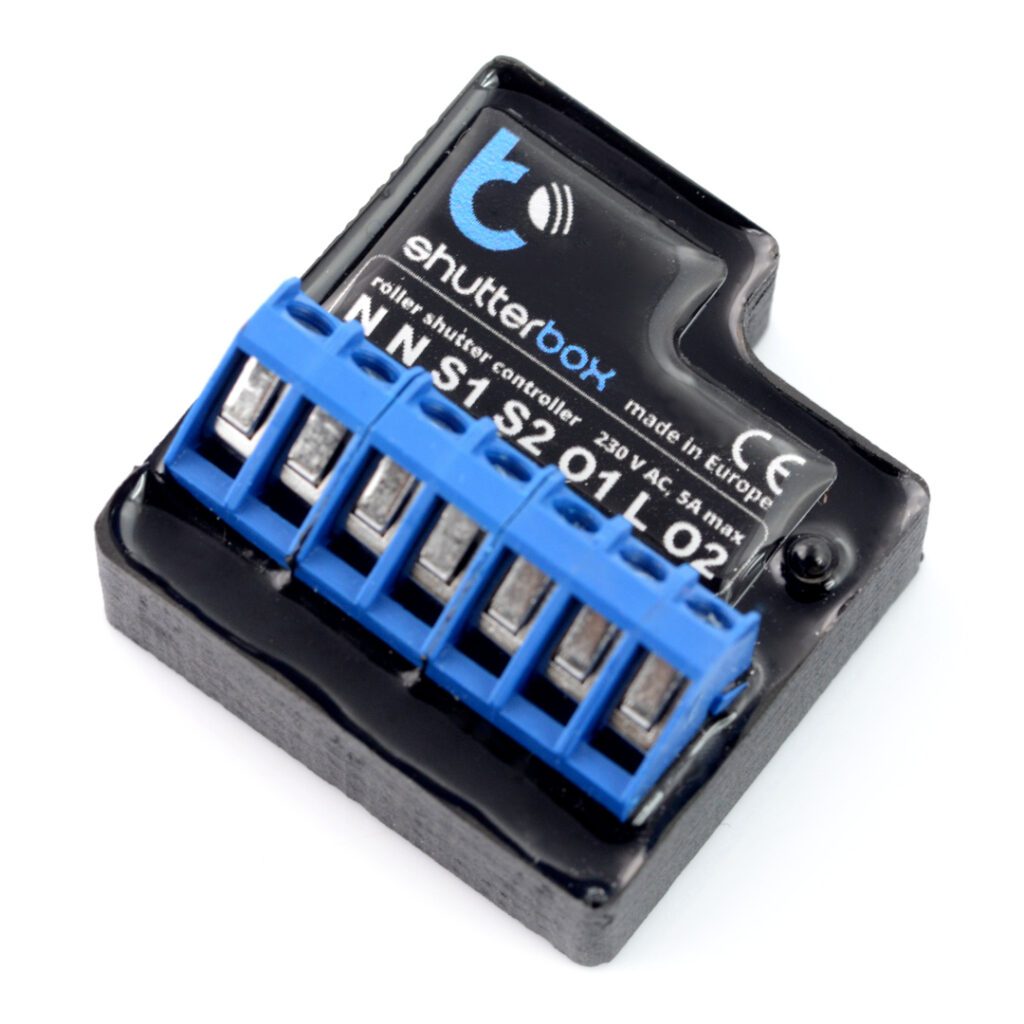The magic of the future in homes is emerging through smart home system solutions. We are increasingly opting for systems where the building responds to our desires and creates a harmonious dance of technology and convenience. Today before us is the Polish Blebox system.
Blebox is a Polish company specializing in developing smart solutions and devices for home automation and the Internet of Things (IoT) since 2013. It offers a wide range of products that allow you to remotely control various aspects of your home, such as lighting, heating, blinds, gates and alarm systems via smartphones or other internet-enabled devices. Blebox products are typically based on wireless technology, which includes Wi-Fi, Bluetooth Low Energy (BLE) or Zigbee protocol, allowing easy integration with existing smart home systems. All devices are accessible via a mobile app or web platform, which in turn allows users to monitor and control their home remotely. Specific products in Blebox’s range include smart outlets, switches, modules for lighting control or roller shutter controllers. The essential strengths of this system put the world of electronics
smart home
in a new light – literally and figuratively.
Blebox smart home - how does it work?
Blebox devices
connect to the local home network to create a smart network that allows communication between them and the control platform. Installation of Blebox devices may vary depending on the specific product and its application, but most of the brand’s devices are designed to allow for relatively easy installation, and many do not require advanced electrical knowledge or the assistance of an electrician.
Usually a screwdriver, wrenches or a screwdriver will suffice for this. Installation and use instructions are provided in the package or available online. Most Blebox devices will need to be connected to a power source, such as through an electrical outlet. Some devices may be required to work on the existing electrical system, especially if they control lighting and other integrated systems. Of course, for more advanced installations or situations that may require the intervention of an electrician, it is advisable to seek technical support or the help of a specialist to ensure that the installation is carried out correctly.
Let’s assume for the sake of simplicity that we already have a Wi-Fi network at home, to better illustrate an example of how Blebox works. Before using the device with Wi-Fi for the first time, you will need to go through the setup process. Most often, it involves selecting a device in the mobile app, entering Wi-Fi network details (such as a password) and waiting for the pairing process to complete. When the Blebox is connected to a Wi-Fi network, it can communicate with other devices on the network. We’re talking about communication with other Blebox devices (for example, a lighting control module + smart outlet) or with other smart home devices that are also connected to a Wi-Fi network. Once Blebox devices are set up and connected to the network, we can also remotely control them using a mobile app. This thus offers simple on, off, adjustment and scheduling from anywhere you have internet access.
Zigbee protocol with Blebox
We often hear about them, but just as often we don’t know what’s behind the term protocol. Protocols in smart devices are certain sets of rules and guidelines that determine how devices communicate with each other, transmit data and cooperate within a network. In the context of smart devices, protocols are essential to ensure correct and efficient communication between different components, enabling the creation of integrated smart home and Internet of Things (IoT) solutions.
The aforementioned Zigbee is one of many protocols used in smart devices for networking in smart home ecosystems, including some Blebox products. It is a wireless communication protocol that allows low-power devices to communicate and collaborate in mesh (grid) networks, which is particularly beneficial in IoT and smart home applications. Importantly, the Zigbee protocol was designed with low-power devices in mind, meaning that devices using it can run for extended periods of time on batteries or low power. Mesh networking means increased communication range, but also reliability, as devices can pass data to each other, creating a flexible network structure. If one device cannot establish a connection with the PBX, it can use the intermediary of other devices, which increases the reliability of the entire system. For these reasons, as well as its ability to integrate with other protocols, Zigbee is readily used as the basis for building smart home networks from lighting to heating to alarms and specialized sensors.
Why Blebox?
The value and advantages of the various systems
smart home
, such as the market-recognized
Fibaro,
do not necessarily mean the same thing when juxtaposed with the needs and preferences of users. Blebox offers a variety of products to control lighting, heating, blinds, gates and other aspects of the home, allowing you to comprehensively cover your home automation needs. This is a favorable option for those who want to be able to control different devices with a single ecosystem. Blebox products are often competitively priced and available in the market – a crucial advantage in the eyes of users who are looking for affordable smart home solutions.
Nor are we limited to one system, because
Blebox
offers the possibility to integrate with other smart home systems. As a result, this allows for more elaborate and personalized action scenarios. If the user is a proponent of voice control, then Blebox offers integration with popular voice assistants such as Amazon Alexa and Google Assistant. Blebox emphasizes the emphasis on user privacy and some communication processes can take place locally, and this is important in terms of data protection, including telemetry data.
How useful was this post?
Click on a star to rate it!
Average rating 5 / 5. Vote count: 2
No votes so far! Be the first to rate this post.




















